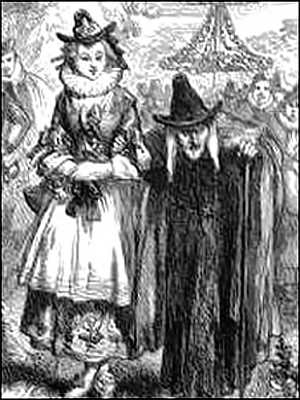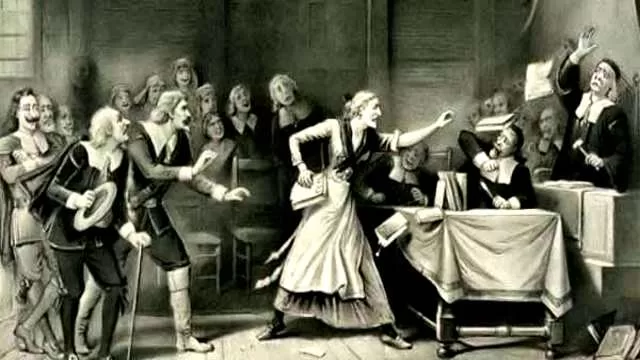In the early 17th century, England was rife with superstition and fear of witchcraft, leading to a series of infamous witch trials. One of the most notable events occurred on April 2nd, 1612, in Fence, Lancashire, when Roger Nowell, a local magistrate, brought forth accusations against several women, including Elizabeth Southerns, known as Demdike, Anne Whittle, referred to as Chattox, and her daughter, Anne Redferne.
This trial would become a significant part of England’s dark history of witch hunts.
Both Demdike and Chattox were elderly women in their eighties and were blind, which added a layer of tragedy to their plight. The proceedings began with testimonies from local residents, including John Nutter, his sister Margaret Crooke, and their friend James Robinson. The Nutter siblings recounted a harrowing tale of their brother Robert, who had died nearly two decades earlier after claiming he had been bewitched by Chattox and Redferne. Robert’s father, Christopher, also fell ill and echoed his son’s claims, further fueling the accusations against the two women.
Margaret Crooke’s testimony was particularly poignant, as she described how Robert had insisted multiple times that Anne Redferne and her family were responsible for his suffering. This narrative of bewitchment was not uncommon during this period, as many believed that illness and misfortune were often the result of witchcraft.

James Robinson added another layer to the story, revealing that he had served in the household of the Nutter family and had witnessed Robert’s threats against Thomas Redferne, Anne’s husband. He confirmed that both Chattox and Redferne had a notorious reputation in the community for their alleged witchcraft, even recounting an incident where they spoiled a barrel of ale in his home.
As the trial progressed, Chattox provided a different perspective, claiming that Robert Nutter had attempted to seduce Anne Redferne. After being spurned, Robert had allegedly threatened her, prompting Chattox to seek revenge through her familiar, a spirit named Fancie. This claim of having a familiar was a common defense among those accused of witchcraft, as it suggested a pact with the devil.
Demdike, when questioned, spoke of her own familiar, a boy named Tibb, who had appeared to her and demanded her soul. She recounted a chilling story of how Tibb had returned years later to suck her blood, a vivid illustration of the fears surrounding witchcraft at the time. Demdike also claimed to have seen Chattox and Redferne creating “pictures of clay” of their accusers, a practice believed to be a form of witchcraft intended to harm.
Despite the lack of concrete evidence, the testimonies presented were enough for Roger Nowell to commit Alizon Device, Demdike, Chattox, and Anne Redferne to Lancaster Castle, where they awaited the August Assizes. The journey to the castle through the Trough of Bowland was arduous, especially for the two elderly women. The Trough, known for its stunning natural beauty, was a challenging route even in modern times, making the ordeal all the more harrowing for the accused.
The Lancashire Witch Trials serve as a stark reminder of the dangers of superstition and the consequences of societal fears. The events of 1612 highlight how easily lives could be destroyed by unfounded accusations and the power of collective hysteria. As we reflect on this dark chapter in history, it is crucial to remember the lessons learned about justice, evidence, and the treatment of those accused of crimes, particularly in times of fear and uncertainty.
In conclusion, the trials of Demdike, Chattox, and Redferne are not just stories of witchcraft; they are a testament to the human capacity for fear and the tragic consequences that can arise from it. Understanding these events helps us appreciate the importance of due process and the need for critical thinking in the face of societal panic.

